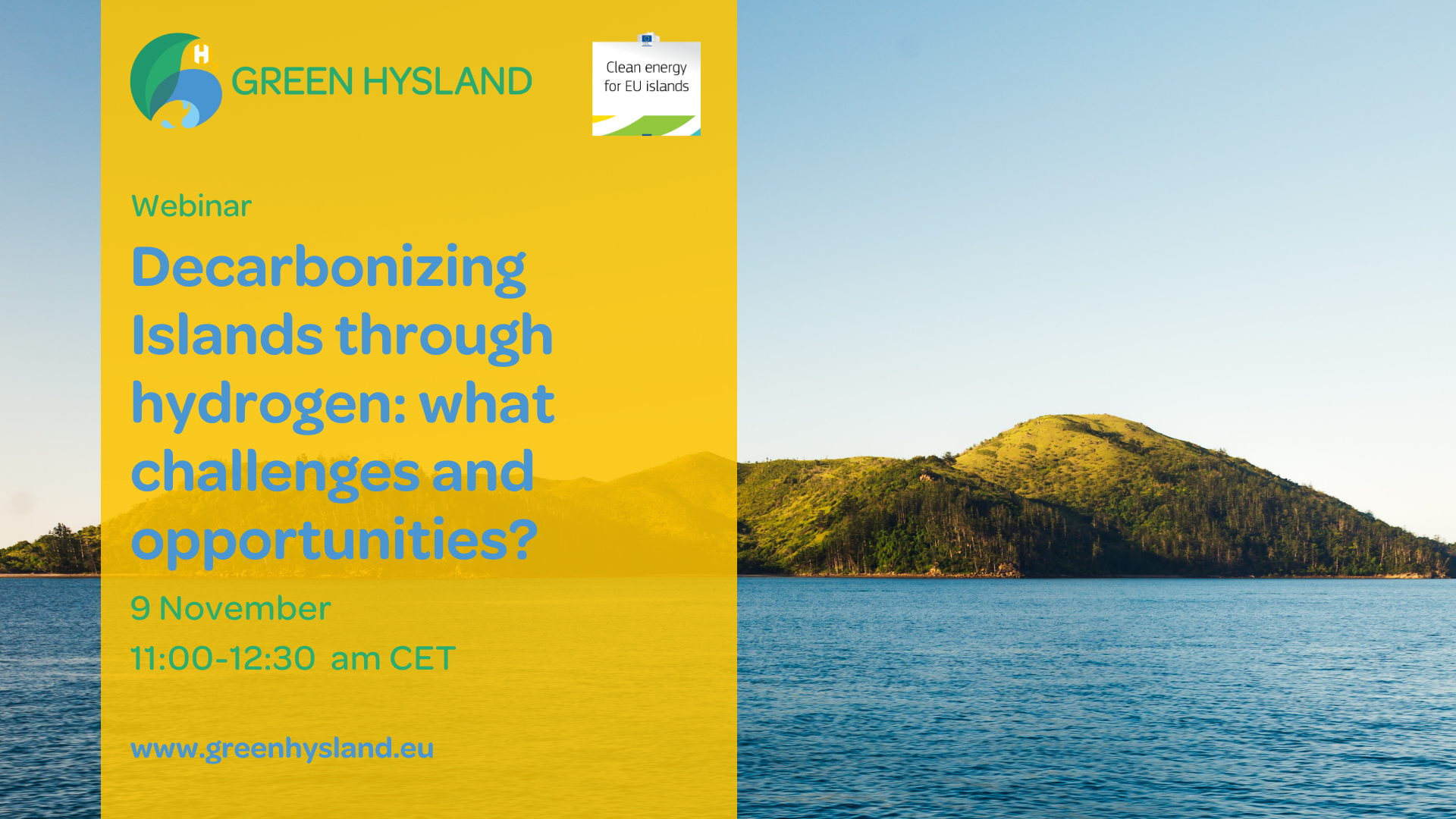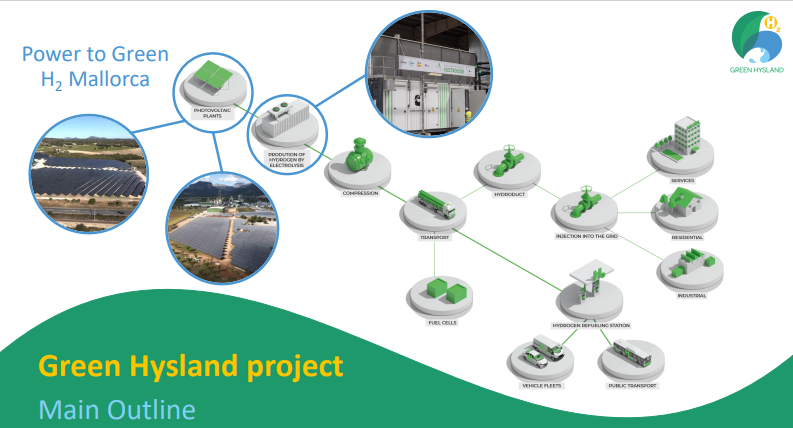Summary 3rd webinar – “Decarbonizing Islands through hydrogen: what challenges and opportunities?”

The aim of the webinar was to present what the challenges and opportunities for hydrogen’s uptake in islands are, and the steps to integrate this versatile energy vector to their energy systems.
The webinar was co-organised by the CE4EUI Secretariat, in its third phase to prepare 30 islands to implement projects to be 100% powered by renewables by 2030. Over 3 years, the Secretariat will provide selected islands with Tailored support, Technical assistance for projects to reach 100% renewables in the energy mix, assistance to find finance and to finalise bankable projects, and capacity building workshops and trainings, explained Jan Cornillie – CE4EUI Secretariat coordinator.
After a brief introduction by Jan Cornillie – CE4EUI Secretariat coordinator, the scene was set by Stefano Barberis – Project Manager at BluEnergy Revolution, representing the CE4EUI.
There are both opportunities and challenges pertaining H2 on islands. If on the one hand the great renewable energy potential would make them natural spots for production, the lack of industrial off-takers and often natural gas infrastructures on islands, need to be taken into account. Hydrogen could also contribute to the seasonality of energy demand through independent site of hydrogen storage, although energetically not very efficient, the scene setter remarked.
Stefano Barberis concluded that developing Hydrogen Valleys on already existing natural islands, could also represent a way to in decarbonise internal mobility, and in a 2050 timeframe, also help islands become refuelling pit stops for H2 ferries and hydrogen exporters.

The first part concluded with a presentation of the Green Hysland project, by Victor Encinas Sanchez – Project Manager at Enagas Renovable and Green Hysland Project Coordinator.
Starting in 2020 and ending in 2025, Green Hysland aims at deploying the first Hydrogen Valley in Southern Europe, on the Island of Mallorca (ES).
Victor stressed how the complexity of the project and the place where it is taking place, represent a blueprint for Europe. With this regard, he noted the prominent role of replication studies in 6 follower territories, to expand the impact outside of the island’s borders.
The main parts of the hydrogen valley are summarised in the image below:

Part 2 – Best practices from 3 Islands
The second part of the webinar presented projects from 3 geographically different islands with different levels of advancement.
Sulev Alajõe – Project manager at the Estonian Islands Energy Agency – presented the early stage plans to develop H2 transports on Estonian Islands (EE) by 2033, from buses to ferries. The project was selected under the Project Development Assistance of the Clean H2 Partnership.
In his intervention, he pointed out the obstacles faced in the process to get national funds, namely the fact that the grant covered only CAPEX and not OPEX, the lack of readiness from bus operators to take over the maintenance of the buses, and the requirement of additionality, to produce hydrogen through power plants built not earlier than 3 years ago.
The second intervention saw Erwin de Boer – Project Manager at Ameland Municipality – presenting the projects the Island of Ameland (NL) has undertaken to uptake H2 in the energy mix. He presented the H2Watt and IANOS projects, and share some of the lessons learnt to all project developers.
Firstly, project developers should: bear in mind the time of the test and start early, as it took the Island of Ameland 1 year to be authorized a 6 week test. They should also consider the transportation of H2 and the inter-state connections when planning. Erwin also invited developers to embrace failure, very common in the H2 field, and turn disappointment in actions to find alternative solutions.
The last speaker was Santiago Díaz Ruano – Industrial Engineer at the Instituto Tecnológico de Canarias – who presented the REMOTE and the BIOGREENFINERY projects in Gran Canaria (ES).
The former, consisting among the many parts, of a PV plant, a microgrid, and an electrolyser of 75kWp, demonstrated how H2 could be used also as a storage solution in an isolated area within an islands, with the potential to become un industrial site but lacking energy infrastructures to do so.
The latter, is focusing on proving the technical feasibility and economic viability off the production of alternative fuels (green h2 and synthetic fuels including ammonia) in the transport sector, through a stand-alone solution composed of a hybrid PV-wind power plant, a battery and a biodiesel genset, the Haber Bosh system and storage facilities for the fuels.
